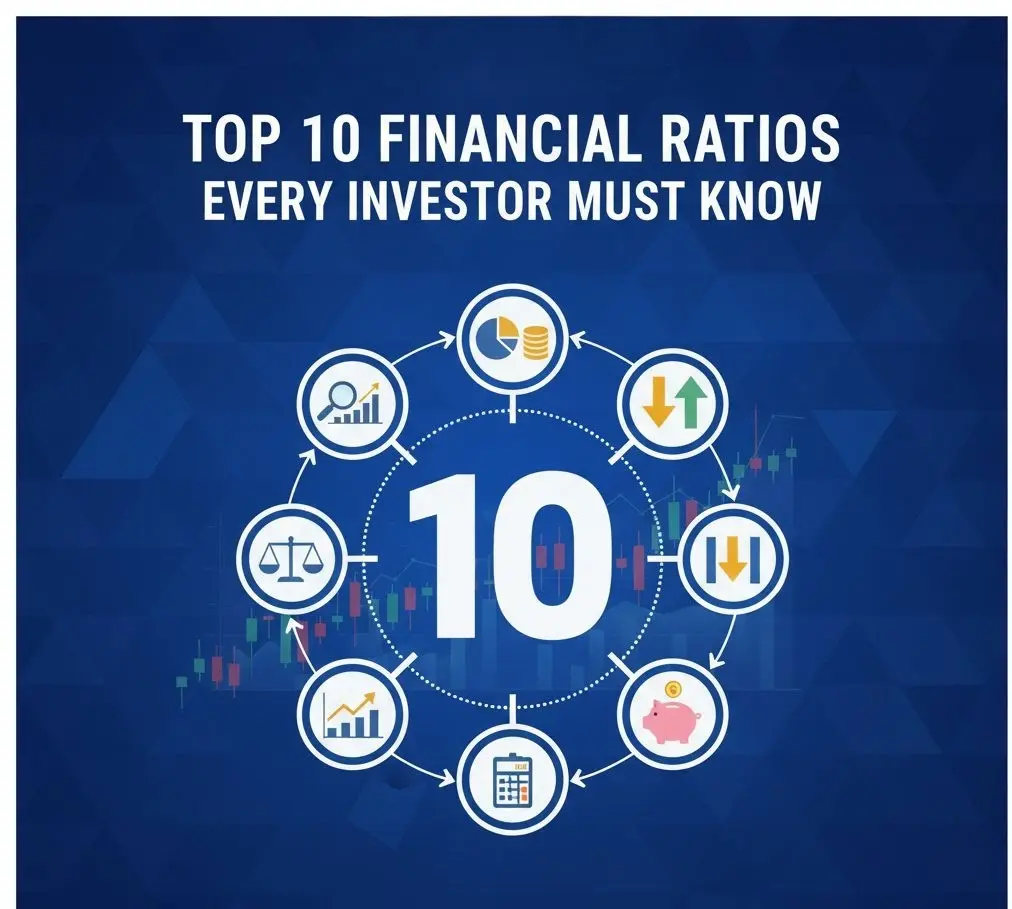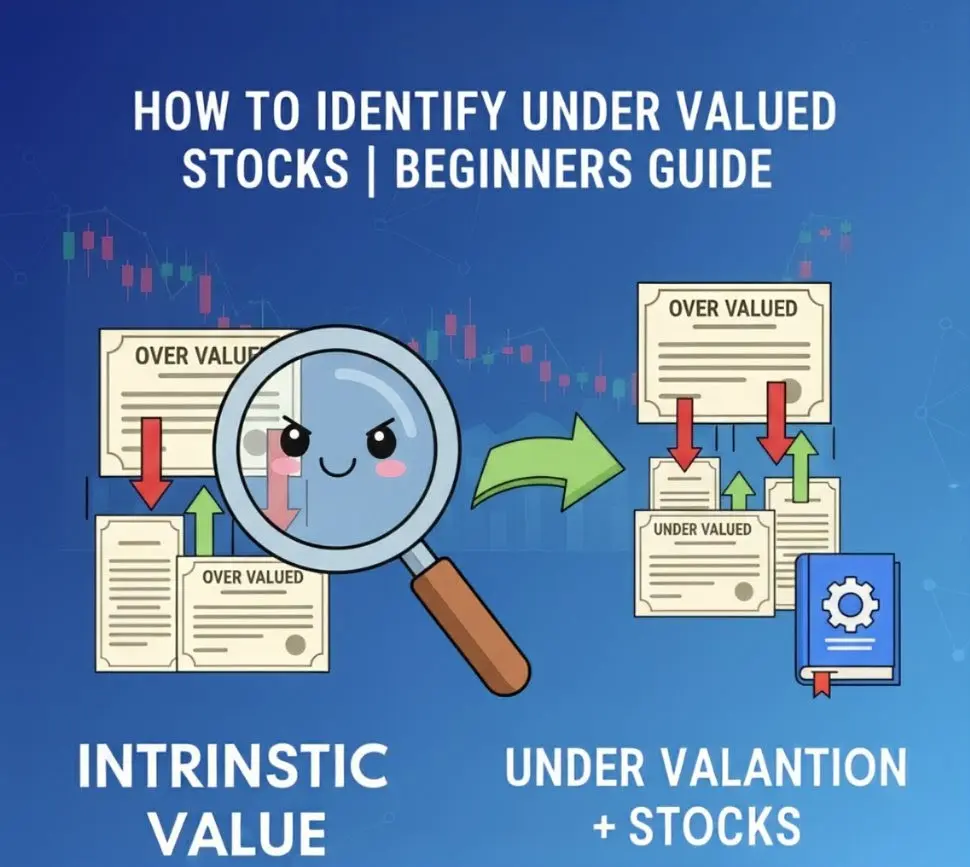

What Are Undervalued Stocks?
Imagine finding a brand new iPhone worth ₹80,000 being sold for ₹50,000. That's exactly what undervalued stocks are - quality companies trading at prices lower than their true intrinsic value.
In the Indian stock market, undervalued stocks are companies with strong fundamentals that are temporarily priced lower than what they're actually worth. This can happen due to:
Negative news or poor quarterly results causing panic selling
Certain industries being out of favor with investors
Quality small-caps being overlooked by institutional investors
Company-specific problems that are solvable in medium term
💡 Warren Buffett's Wisdom
"Price is what you pay, value is what you get." - This simple principle is the foundation of value investing. Your goal is to find wonderful companies available at fair or bargain prices.
Why Indian Markets Offer Great Opportunities
The Indian stock market is particularly fertile ground for value investors because:
Unlike mature markets, Indian markets have more information asymmetry and emotional trading, creating pricing anomalies.
Thousands of small and mid-cap companies receive little analyst coverage, leaving hidden gems undiscovered.
India's strong economic growth means many companies have better future prospects than current prices reflect.
Key Financial Ratios for Identifying Undervalued Stocks
These ratios are your primary tools for screening potential undervalued stocks:
| Ratio | What It Measures | Ideal Range for Indian Stocks | Why It Matters |
|---|---|---|---|
| P/E Ratio | Price relative to earnings | Below industry average, ideally 8-18 | Lower P/E may indicate undervaluation |
| P/B Ratio | Price relative to book value | Below 2, ideally below 1.5 | P/B < 1 means buying below asset value |
| Debt-to-Equity | Financial leverage | Below 1 for most sectors | Low debt reduces bankruptcy risk |
| ROE | Profitability efficiency | Consistently above 15% | High ROE indicates competitive advantage |
| Current Ratio | Short-term liquidity | Above 1.5 | Ensures company can pay short-term debts |
| Dividend Yield | Income return | 2-6% for stable companies | Provides income while waiting for price correction |
Important: These are general guidelines. Always compare ratios with industry peers. A P/E of 20 might be cheap for IT but expensive for a manufacturing company.
Step-by-Step Process to Find Undervalued Stocks
Initial Screening Using Ratios
Start with broad screening using key financial ratios to create a watchlist of potential candidates.
P/B Ratio < 2
ROE > 15%
Debt/Equity < 1
Moneycontrol
Tijori Finance
NSE/BSE Screeners
Practical Example: Screen for Indian companies with P/E below 15, P/B below 1.5, ROE above 15%, and debt-to-equity below 0.8. This might give you companies like certain PSU banks, auto ancillaries, or chemical companies during sector downturns.
Business Quality Assessment
Not all cheap stocks are good buys. Eliminate companies with poor business fundamentals.
Stable profit margins
Strong market position
Competitive advantages
High promoter pledging
Auditor resignation
Consistent losses
Concalls transcripts
Management interviews
Industry reports
⚠️ Avoid Value Traps
Some stocks are cheap for a reason - declining business, poor management, or obsolete technology. Always verify if the low valuation is temporary or permanent.
Intrinsic Value Calculation
Calculate the company's true worth to compare with current market price.
Margin of Safety = (Intrinsic Value - Current Price) ÷ Intrinsic Value
Projects future cash flows
Discounts to present value
Historical averages
Industry benchmarks
Liquidation value
Replacement cost
Simple DCF Example: If a company's calculated intrinsic value is ₹500 per share and it's trading at ₹350, you have a 30% margin of safety [(500-350)/500]. This provides cushion against calculation errors.
Management & Governance Check
Even the best business can be destroyed by poor management. Assess leadership quality.
Capital allocation
Shareholder communication
Compensation structure
Related party transactions
Promoter holding pattern
ESG practices
Frequent guidance misses
Regulatory actions
High attrition
Investment Decision & Monitoring
Make the buy decision and establish monitoring framework.
Quality business
Competent management
Reasonable growth prospects
Average down if price falls
Don't exceed 5% in one stock
Diversify across sectors
Management guidance
Industry developments
Valuation changes
Real Indian Stock Example: Case Study
📈 The Turnaround Story: A Practical Example
Let's examine a hypothetical but realistic scenario based on common Indian market patterns:
• Raw material price spike
• Semiconductor shortage
• Supply chain disruptions
Stock fell 40% from highs
• Management capable
• Problems temporary
• P/E dropped to 8 (vs 18 historical)
• Stock recovered 120%
• Patient investors rewarded
• Business fundamentals proved right
Essential Tools for Indian Value Investors
Best for: Fundamental screening and financial statement analysis
Key Features: Custom ratio screening, historical data, export capabilities
Cost: Free with limitations, paid plans available
Best for: Deep fundamental research and forensic accounting
Key Features: Management analysis, segment data, conference call transcripts
Cost: Subscription based
Best for: Quick financial data and news
Key Features: Comprehensive financials, news aggregation, portfolio tracking
Cost: Free
Best for: Official corporate announcements and filings
Key Features: Regulatory filings, annual reports, corporate actions
Cost: Free
Sector-Specific Valuation Considerations
| Sector | Key Valuation Metrics | Special Considerations |
|---|---|---|
| Banking & Financials | Price to Book, NPA ratios, CAR, Net Interest Margin | Cyclical nature, regulatory changes, asset quality cycles |
| IT Services | P/E, PEG, Revenue Growth, Client Concentration | Currency impact, attrition rates, digital transformation demand |
| Manufacturing | EV/EBITDA, ROCE, Capacity Utilization | Commodity cycles, capital intensity, export opportunities |
| Pharmaceuticals | P/E, R&D spend, ANDA pipeline, USFDA issues | Regulatory risks, patent cliffs, generic competition |
| Consumer Goods | P/E, Market Share, Distribution Reach, Brand Strength | Rural demand, inflation impact, competitive intensity |
Common Mistakes to Avoid
⚠️ Value Investing Pitfalls
- Falling for value traps: Cheap stocks getting cheaper due to permanent business decline
- Ignoring quality for price: Buying poor businesses just because they're cheap
- Underestimating turnaround time: Recovery taking longer than expected
- Over-concentrating: Putting too much in one "sure shot" idea
- Impatience: Selling too early before thesis plays out
- Anchoring to purchase price: Not selling when thesis is broken due to emotional attachment
- Ignoring macro factors: Overlooking sector-wide or economic challenges
Your Undervalued Stock Checklist
✅ Complete Undervalued Stock Checklist
- Valuation: P/E below industry average? P/B reasonable? Margin of safety > 20%?
- Profitability: Consistent ROE > 15%? Stable or improving margins?
- Financial Health: Debt-to-equity manageable? Current ratio > 1.5?
- Business Quality: Competitive advantages? Strong market position?
- Management: Track record of success? Shareholder friendly?
- Growth Prospects: Industry tailwinds? Company-specific growth drivers?
- Catalysts: What could trigger price discovery? New products? Sector rotation?
- Risks: Major threats identified? Risk-reward favorable?
When to Sell Undervalued Stocks
Knowing when to sell is as important as knowing when to buy:
When stock price reaches or exceeds your calculated intrinsic value
When original investment thesis is no longer valid due to changed circumstances
When you find another stock with significantly better risk-reward ratio
When expected turnaround/catalyst doesn't materialize within reasonable time
Final Thoughts
Finding undervalued stocks in the Indian market requires patience, discipline, and a systematic approach. While it's challenging, the rewards can be substantial for those willing to do the hard work.
Remember these key principles for success:
- Focus on business quality first, valuation second
- Always insist on a margin of safety
- Be patient - value realization takes time
- Diversify but don't over-diversify
- Keep learning continuously about businesses and industries
- Have conviction in your analysis but be ready to admit mistakes
- Think like a business owner, not a stock trader
The Indian stock market offers tremendous opportunities for value investors who are willing to look beyond popular stocks and do independent research. With the right approach and mindset, you can build significant wealth by identifying and investing in undervalued quality businesses.
Next Steps: Start small with companies you understand. Apply this framework to 2-3 stocks and track your analysis versus actual performance. Remember, value investing is a journey of continuous learning and improvement.
Other Financial Articles


What Is Intrinsic Value? Simple Explanation with Examples
